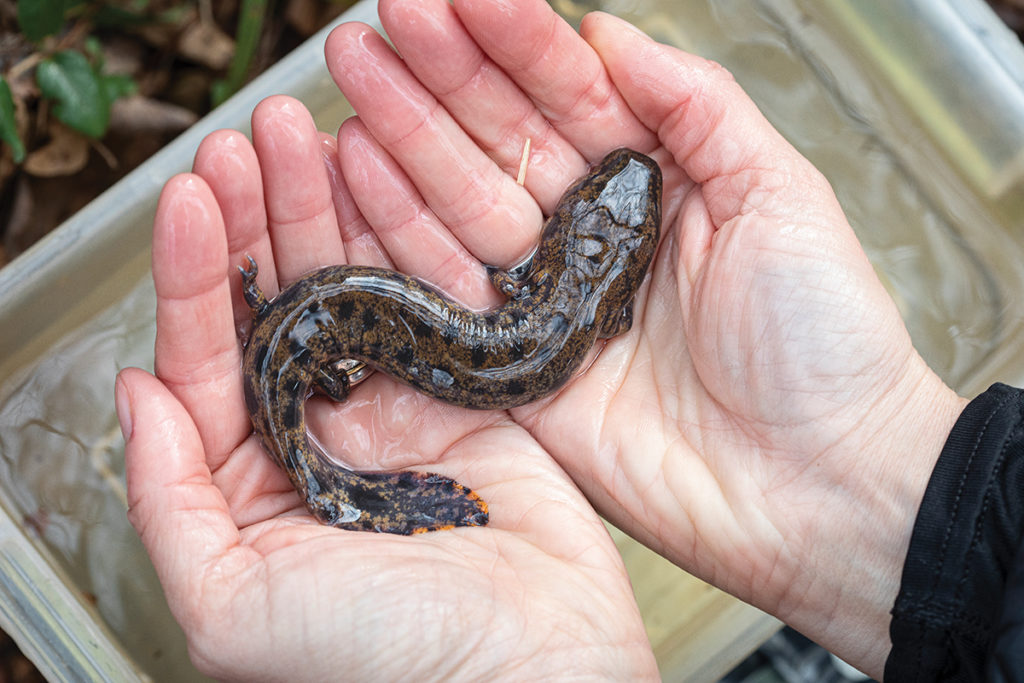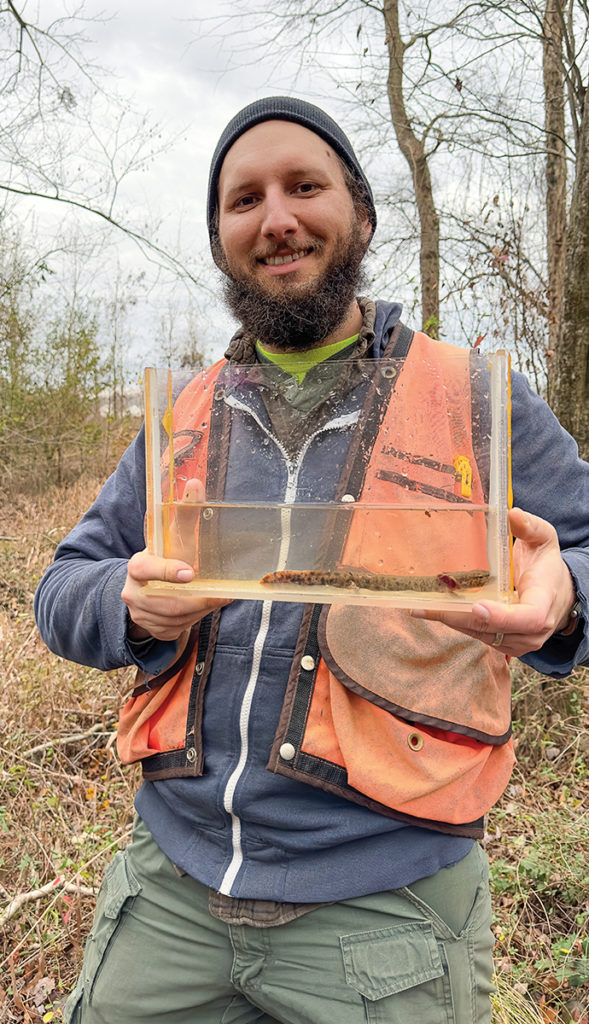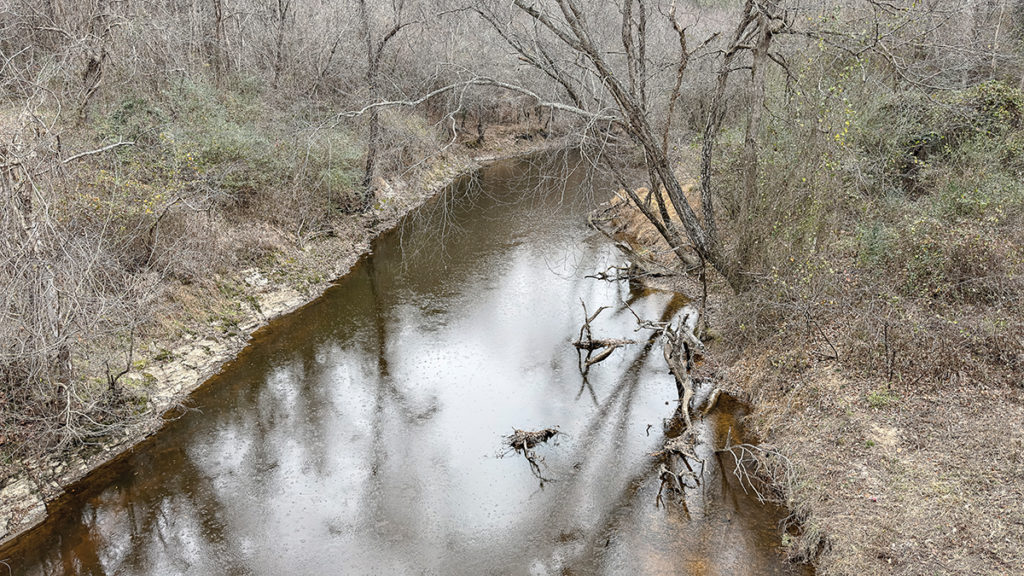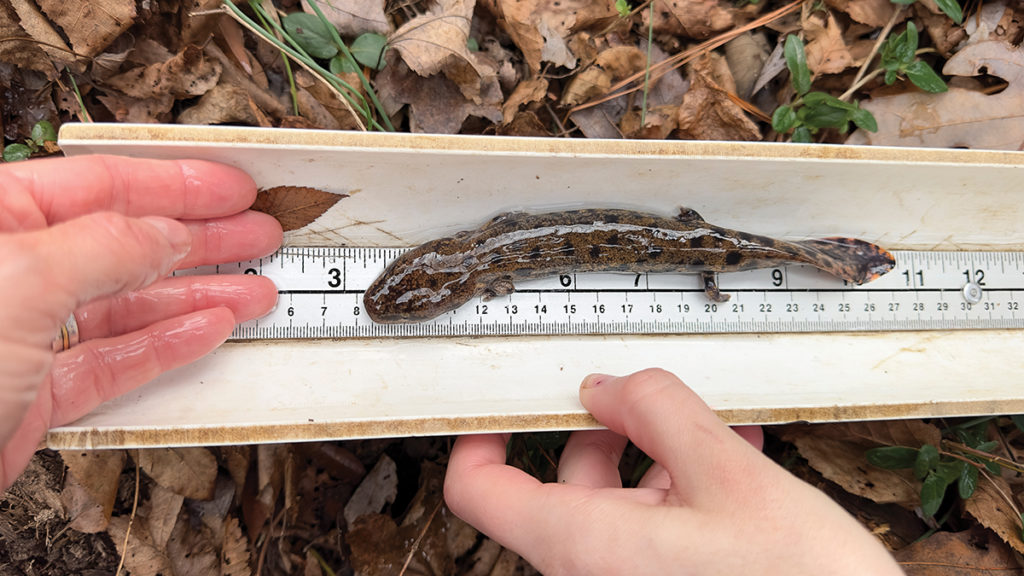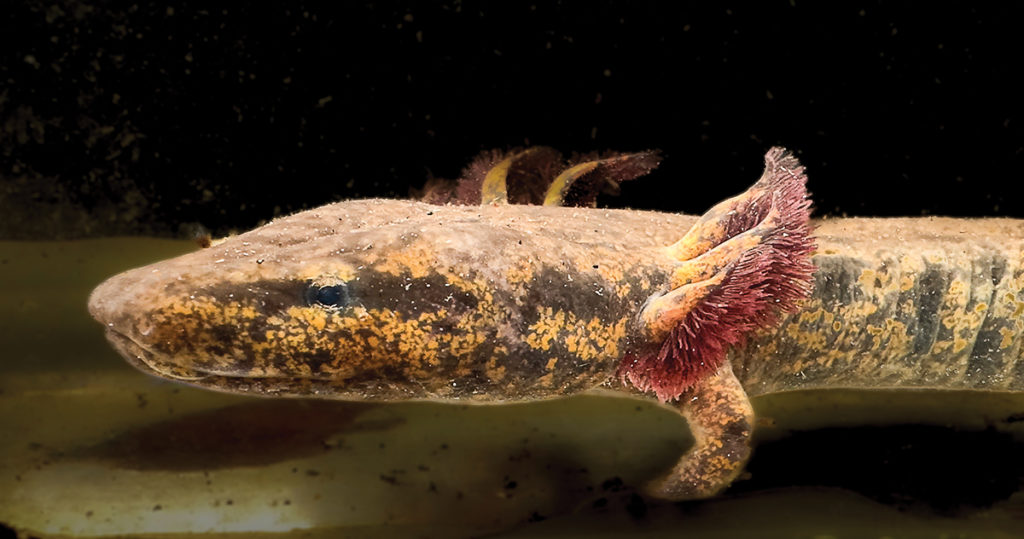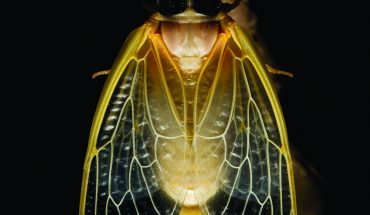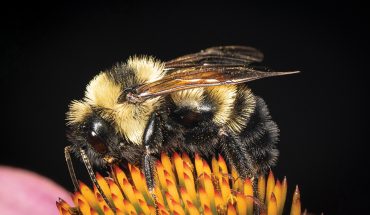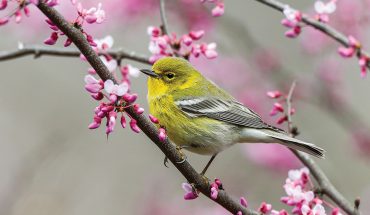This unique and truly aquatic salamander is found only in the Tar-Pamlico and Neuse River basins of North Carolina, and its survival is crucial.
Words and photography Mike Dunn
Back in December, my wife, Melissa, who works at the North Carolina Museum of Natural Sciences, led a “Waterdog Warriors” educator workshop. It included taking participants out in the field with Eric Teitsworth, a graduate student at North Carolina State University. He has studied the Neuse River Waterdog, Necturus lewisi, for the past several years.
One of the museum vans had engine trouble, so I helped transport some folks out to the workshop site — near a bridge over the Little River in Johnston County — and ended up catching the tail end of the workshop. They had just spent several hours in the field with a team of scientists learning about these critters while setting minnow traps baited with chicken liver (the bait of choice for waterdogs).
I wasn’t able to go the next day when they checked to see what they’d caught, but I was hooked when I saw Melissa’s photos. She asked Eric if I could tag along on their next sampling day, and he graciously agreed.
What makes this slimy amphibian so special? The Neuse River Waterdog is a truly aquatic salamander — meaning it never leaves the water — and is believed to be a long-lived species. We don’t know for sure how long these waterdogs live, but the closely-related Carolina Mudpuppy can live up to 30 years.
The Neuse River Waterdog is also endemic to North Carolina: the Tar-Pamlico and Neuse River basins are the only places in the world where this salamander is known to exist, in medium-to-large streams and rivers in 18 counties in our Piedmont and Coastal Plain.
The waterdog is somewhat common in more pristine drainages, but has suffered serious declines in others, particularly the Neuse River system around Raleigh. Surveys conducted by former NCMNS herpetologist Alvin Braswell and colleagues in the 1970s established a baseline for population distribution of the species. Almost 30 years later, surveys by the NC Wildlife Resources Commission showed a significant decline in distribution, with a loss of approximately 35% of its historical range.
Neuse River Waterdogs were federally listed as “threatened” under the Endangered Species Act in 2021. (A threatened species is “any species which is likely to become an endangered species within the foreseeable future throughout all or a significant portion of its range.”) An official United States Fish and Wildlife Services Species Recovery Plan is expected soon.
This will define what success looks like for the Neuse River Waterdog, what is needed to support this recovery, and what a predicted timeline and cost for these efforts would be. Potential actions include monitoring population trends, protecting and restoring crucial habitats, and reducing threats like water pollution and sedimentation.
Currently, USFWS is supporting the ongoing research at NC State and has recently provided support and funding through Project RESTORE (Rescuing Endangered Species through Outreach, Restoration and Education) to raise awareness of imperiled species in our state. The Waterdog Warriors workshop is part of this partnership.
So four days after first meeting Eric, I found myself spending a cold, drizzly morning tromping along sections of Buffalo Creek and the Little River in Johnston County. Eric and his team of volunteers and field technicians spent a few hours checking over 50 traps that they had baited earlier in the week.
I can’t think of a better way to learn about the waterdog than spending time in the field with people that have studied it for years, seeing its habitat up close and personal, and, finally, watching the team capture and process eight of them in a day!
Processing a waterdog involves careful handling and taking measurements such as length, weight and sex, as well as taking steps to identify individual salamanders to help estimate the population. The researcher will take a photograph of the dorsal side (top) of the salamander, as each has a unique spotting pattern. Then they inject a “tattoo” on its underside.
Called a Visible Implant Elastomer (VIE), it’s a common tagging technique that involves gently injecting a tiny amount of liquid under the skin of an animal to leave a colored dot. It has been used by scientists for years and shows no ill effects. On waterdogs, researchers place red, orange, yellow or blue VIE tattoos near each arm- and leg pit, giving them four total marks.
The salamanders are soon released back into the habitat where they were caught. (Eric was once asked to describe what he does and he responded, “I guess I’m a salamander tattoo artist.”)
I was able to place a few waterdogs in a small tank in an attempt to photograph them before release. It’s definitely not easy: they move around a lot, and it’s tough to get a good background through the clear tanks. Plus, you want to return them to their habitat as soon as possible to reduce stress. But these
critters are amazing. An average adult waterdog is about 6 to 9 inches in length; the largest animal we measured was just over 11 inches.
A waterdog is golden brown with dark splotches and smooth, slimy skin. But two things about its appearance really stand out: its squared-off head and bushy red gills.
As with many salamanders, the wide head makes it look like the salamander is smiling at you. Add the gills and it’s one adorable critter. Waterdogs require highly oxygenated waters to thrive, and they use the gills for breathing. They appear most active during the coldest months of the year, as colder waters can hold more dissolved oxygen than warm water.
As we walked between traps, I fired questions at the team. They explained some of what little we know about this species: waterdogs seem to be more active at night; they appear to prefer silt-free leaf packs and gravel for feeding areas, and their diet consists of mostly stream and terrestrial invertebrates like insects, crayfish, worms and snails, as well as the occasional small fish; they grow slowly and don’t breed until age 5 or 6; females lay eggs once a year, in the spring, under rocks or logs, but we don’t know much about the needs of the larvae. There is still so much to learn about this secretive species!
At one point I was standing on a bridge in a light rain overlooking a stretch of the Little River, where we had just caught several Neuse River Waterdogs. Down the bank were five discarded mattresses and some other litter. I could hear heavy machinery clearing land in the distance. I wondered how much longer these amazing creatures (and all the others that call this river home) will be able to hang on? We must do a better job of protecting our waterways.
One important way to do that is by increasing the riparian buffers: currently, a 50-foot buffer of vegetation is required along waterways in the Neuse River basin, but more would be better. Riparian buffers protect waterways by filtering out sediment and other pollutants.
At one of the sites we sampled, I was happy to see boundary signs indicating that the Triangle Land Conservancy had purchased many acres bordering one creek, a sure way to benefit water quality by protecting the integrity of the stream bank.
At the end of the day, I asked Eric what his hopes are for the future. He is intensely interested in learning more about the waterdogs, especially where they thrive and why. And he hopes that we can help conserve this fascinating species.
It is both a good indicator of water quality and an important cultural touchstone for North Carolinians. What better icon for the conservation of our precious water resources is there than a smiling, bewhiskered salamander that can only be found here?

This article originally appeared in the March 2023 issue of WALTER magazine.

